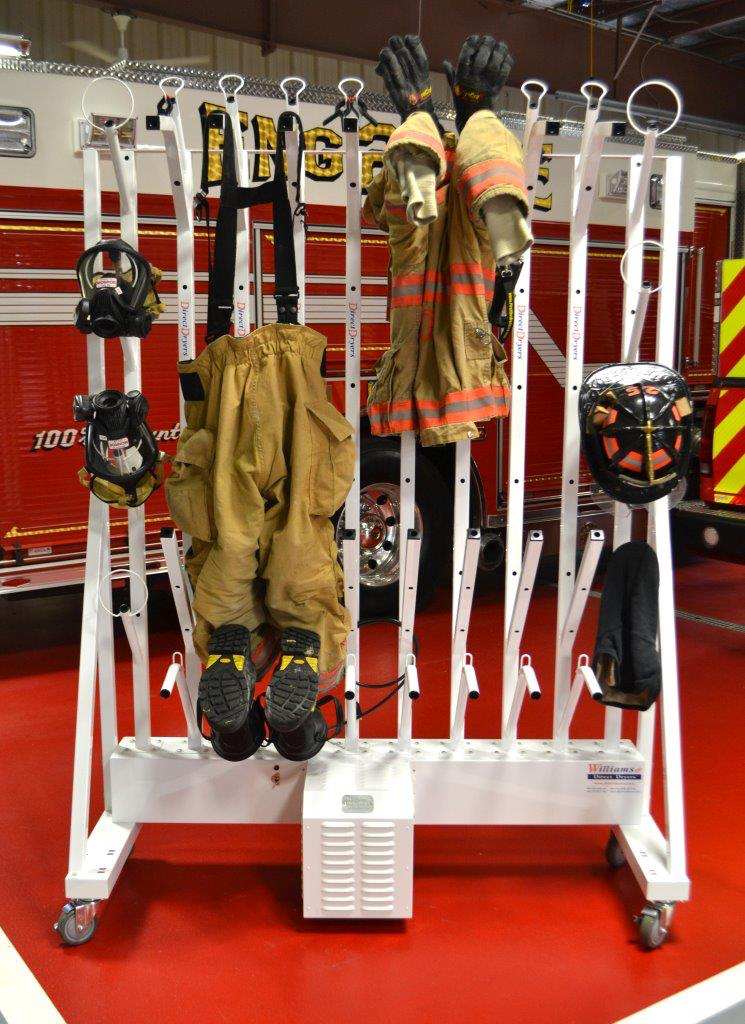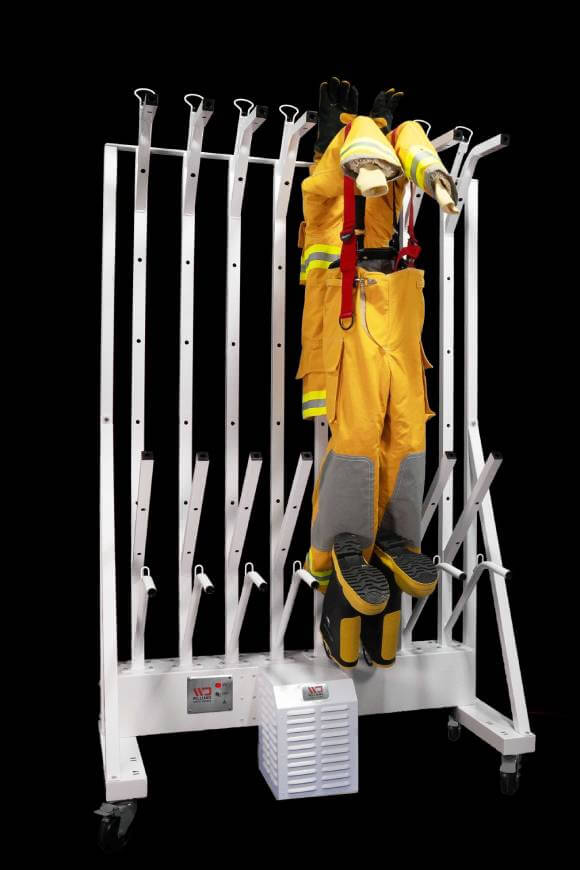Cancer rates among firefighters are statistically significant: a 2013 study found increased incidence risk and mortality rates for all cancers among firefighters. A follow-up study found that the amount of time spent directly engaged in live fire assignments was directly related to incidents of lung cancer and leukemia. It’s clear that this is a problem. The only question is: what can be done about it?

As it turns out, a lot. There are many behaviors firefighters can incorporate into their daily routines that will not only reduce carcinogen exposure, but also increase safety while on the job. Here are our recommendations to help maintain a healthy career so you can enjoy doing what you love for years to come.
Clean your PPE
Our first tip is a no-brainer: clean your gear. When you are out on a call, you are exposed to a variety of chemicals formed as byproducts of combustion. It is theorized that these could be a cause of increased cancer rates in firefighters. The solution is to come up with a cleaning schedule that suits your needs and stick to it.
There are three types of cleaning you should know about:
- Routine: routine cleaning should be done after every job. This includes brushing debris from your PPE, rinsing your gear with water and spot cleaning as necessary.
- Advanced: it is best to perform advanced cleaning at least every six months, depending on use and the condition of your clothing. See your PPE manufacturer’s instructions for proper care of all equipment.
- Specialized: specialized cleaning should be done after exposure to biohazards or toxic materials that cannot otherwise be washed in the extractor.
Always use a specialized turnout gear washer or extractor for your gear. These are designed to clean your turnout gear without causing damage. They also remove more water from your gear after the wash cycle for faster drying times. Wash all your liners together and try to wash your gloves and shells in one cycle, too.
PPE can take over 24 hours to completely dry when it is hung, which is why we recommend using the Williams Direct Dryers turnout gear dryer for this step. Our gear dryers use ambient air to safely dry delicate equipment and maintain thermal protection. Best of all: your gear is dry in just a short time, making it easy to clean your gear between long shifts.

Use SCBA
Respiratory cancers are among the most common among firefighters, so protecting your lungs should be a priority. For optimal protection, put on your SCBA from the start of the initial attack and keep it on to the completion of overhaul. If you can smell smoke, then you are probably still inhaling potentially life-threatening chemicals. Using SCBA will give you a higher level of respiratory protection.
Get Clean on the Scene
While PPE protects you from more imminent danger, it does not prevent exposure to all chemicals and harmful compounds. A 2017 study indicates that polycyclic aromatic hydrocarbons (PAHs) may go through or around PPE to the skin or transfer to the wearer during removal of PPE, with the hands and neck being the most prone to PAH contamination.
There are two solutions to this: 1) wear Nomex hoods, even on exterior assignments and 2) clean up with Wet-Naps or baby wipes on the scene. Be sure to remove as much soot as possible from your head, neck, throat, underarms, and hands. In the same 2017 study, cleansing wipes were found to reduce PAH contamination from the neck by as much as 54 percent!
Decontamination Methods
Prevent further contamination by changing out of your turnout gear quickly. Try to wash your gear after every call and shower thoroughly afterwards. Basic decontamination using dish soap, water and scrubbing has been found to be far more effective than dry or air-based decontamination.
Store PPE in Dedicated Containers
Cross-contamination is a big problem in the fire service. We recommend storing your PPE in dedicated containers. Do not bring contaminated PPE home and never store it inside your vehicle. In addition to exposing you to contaminants in an enclosed space, storing PPE in your car can damage the thermal integrity of your gear.
Remain Vigilant
Many firefighters have a false sense of security when they don turnout gear. The truth is: PPE alone is not enough to prevent cancer. Many chemicals make it through PPE and contaminate the skin. Your skin absorbs these chemicals, especially when exposed to heat. This makes your PPE maintenance before, during and after a call that much more important. Take every precaution to protect yourself and care for your gear.
Cancer risk is dependent on so much: genetics, lifestyle choices and environmental exposure affect everyone, regardless of occupation. While there is no tried-and-true method to prevent cancer, there is plenty you can do to reduce your risk. If you or someone you know is currently battling cancer, please reach out to the Firefighter Cancer Support Network to learn more about the resources available to you. As always, we encourage fire stations across the globe to consider potentially life-saving measures such as the installation of a Williams Direct Dryer to help protect the heroes that keep our communities safe.

